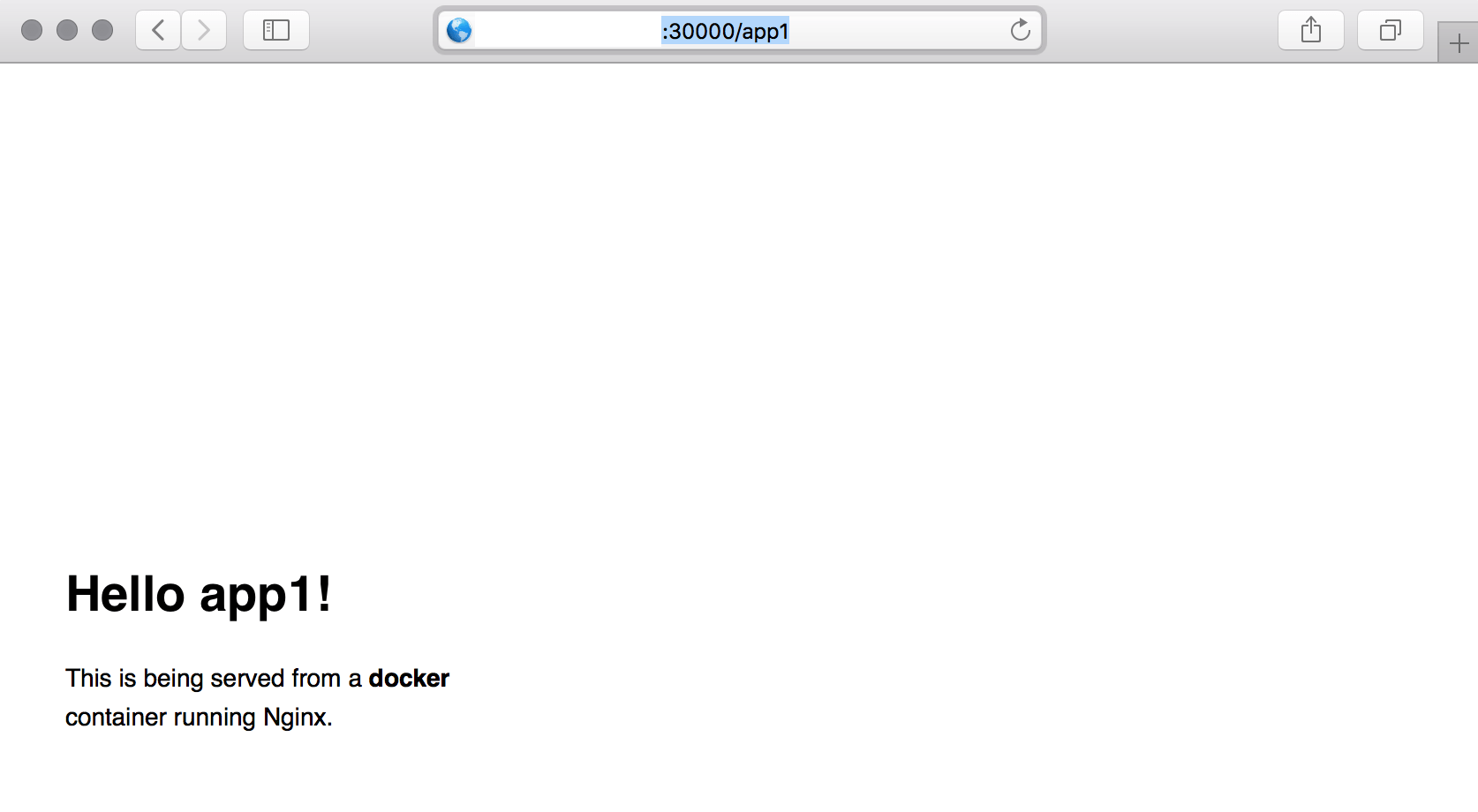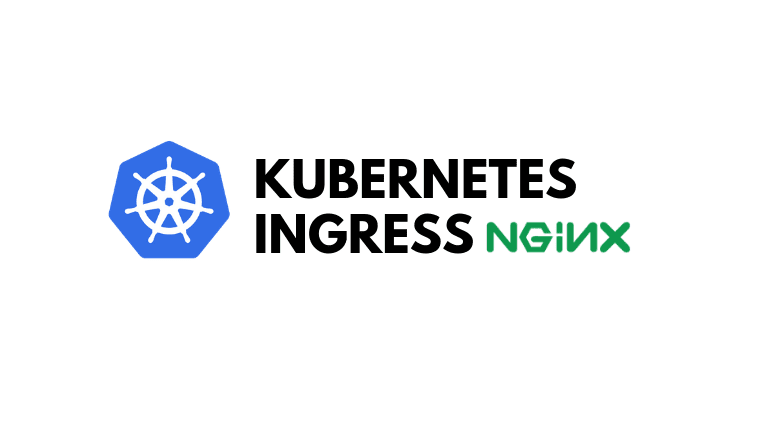How to Build Kubernetes Nginx Ingress Controller
NGINX Ingress controller works with both NGINX and NGINX Plus and supports the standard Ingress features - content-based routing and TLS/SSL termination...
By default, pods of Kubernetes services are not accessible from the external network, but only by other pods within the Kubernetes cluster. Kubernetes has a built‑in configuration for HTTP load balancing, called Ingress, that defines rules for external connectivity to Kubernetes services. Users who need to provide external access to their Kubernetes services create an Ingress resource that defines rules, including the URI path, backing service name, and other information. The Ingress controller can then automatically program a frontend load balancer to enable Ingress configuration. The NGINX Ingress Controller for Kubernetes is what enables Kubernetes to configure NGINX and NGINX Plus for load balancing Kubernetes services.
Ingress is the built‑in Kubernetes load‑balancing framework for HTTP traffic. With Ingress, you control the routing of external traffic. When running on public clouds like AWS or GKE, the load-balancing feature is available out of the box. You don’t need to define Ingress rules. In this post, I will focus on creating Kubernetes Nginx Ingress controller running on Vagrant or any other non-cloud based solution, like bare metal deployments. I deployed my test cluster on Vagrant, with kubeadm.
Create a Sample App Deployment
For this lab, let’s create two simple web apps based on dockersamples/static-site docker image. Those are Nginx containers that display application name which will help us to identify which app we are accessing. The result, both apps accessible through load balancer:

Here is the app deployment resource, the two same web apps with a different name and two replicas for each:
⚡ cat > app-deployment.yaml <<EOF apiVersion: extensions/v1beta1 kind: Deployment metadata: name: app1 spec: replicas: 2 template: metadata: labels: app: app1 spec: containers: - name: app1 image: dockersamples/static-site env: - name: AUTHOR value: app1 ports: - containerPort: 80 --- apiVersion: extensions/v1beta1 kind: Deployment metadata: name: app2 spec: replicas: 2 template: metadata: labels: app: app2 spec: containers: - name: app2 image: dockersamples/static-site env: - name: AUTHOR value: app2 ports: - containerPort: 80 EOF
And same for services:
⚡ cat > app-service.yaml <<EOF apiVersion: v1 kind: Service metadata: name: appsvc1 spec: ports: - port: 80 protocol: TCP targetPort: 80 selector: app: app1 --- apiVersion: v1 kind: Service metadata: name: appsvc2 spec: ports: - port: 80 protocol: TCP targetPort: 80 selector: app: app2 EOF
Next, we’ll create above resources:
⚡ kubectl create -f app-deployment.yaml -f app-service.yaml Create Nginx Ingress Controller
If you prefer Helm, installation of the Nginx Ingress controller is easier. This article is the hard way, but you will understand the process better.
All resources for Nginx Ingress controller will be in a separate namespace, so let’s create it:
⚡ kubectl create namespace ingress
The first step is to create a default backend endpoint. Default endpoint redirects all requests which are not defined by Ingress rules:
⚡ cat > default-backend-deployment.yaml <<EOF apiVersion: extensions/v1beta1 kind: Deployment metadata: name: default-backend spec: replicas: 2 template: metadata: labels: app: default-backend spec: terminationGracePeriodSeconds: 60 containers: - name: default-backend image: gcr.io/google_containers/defaultbackend:1.0 livenessProbe: httpGet: path: /healthz port: 8080 scheme: HTTP initialDelaySeconds: 30 timeoutSeconds: 5 ports: - containerPort: 8080 resources: limits: cpu: 10m memory: 20Mi requests: cpu: 10m memory: 20Mi EOF
And to create a default backend service:
⚡ cat > default-backend-service.yaml <<EOF apiVersion: v1 kind: Service metadata: name: default-backend spec: ports: - port: 80 protocol: TCP targetPort: 8080 selector: app: default-backend EOF
We will create those resources in ingress namespace:
⚡ kubectl create -f default-backend-deployment.yaml -f default-backend-service.yaml -n=ingress
Then, we need to create a Nginx config to show a VTS page on our load balancer:
⚡ cat > nginx-ingress-controller-config-map.yaml <<EOF apiVersion: v1 kind: ConfigMap metadata: name: nginx-ingress-controller-conf labels: app: nginx-ingress-lb data: enable-vts-status: 'true' EOF ⚡ kubectl create -f nginx-ingress-controller-config-map.yaml -n=ingress
And here is the actual Nginx Ingress controller deployment:
⚡ cat > nginx-ingress-controller-deployment.yaml <<EOF apiVersion: extensions/v1beta1 kind: Deployment metadata: name: nginx-ingress-controller spec: replicas: 1 revisionHistoryLimit: 3 template: metadata: labels: app: nginx-ingress-lb spec: terminationGracePeriodSeconds: 60 serviceAccount: nginx containers: - name: nginx-ingress-controller image: quay.io/kubernetes-ingress-controller/nginx-ingress-controller:0.9.0 imagePullPolicy: Always readinessProbe: httpGet: path: /healthz port: 10254 scheme: HTTP livenessProbe: httpGet: path: /healthz port: 10254 scheme: HTTP initialDelaySeconds: 10 timeoutSeconds: 5 args: - /nginx-ingress-controller - --default-backend-service=\$(POD_NAMESPACE)/default-backend - --configmap=\$(POD_NAMESPACE)/nginx-ingress-controller-conf - --v=2 env: - name: POD_NAME valueFrom: fieldRef: fieldPath: metadata.name - name: POD_NAMESPACE valueFrom: fieldRef: fieldPath: metadata.namespace ports: - containerPort: 80 - containerPort: 18080 EOF
Notice the \--v=2 argument, which is a log level and it shows the Nginx config diff on start. Don’t create Nginx controller yet.
Kubernetes and RBAC
Before we create Ingress controller and move forward you might need to create RBAC rules. Clusters deployed with kubeadm have RBAC enabled by default:
⚡ cat > nginx-ingress-controller-roles.yaml <<EOF apiVersion: v1 kind: ServiceAccount metadata: name: nginx --- kind: ClusterRole apiVersion: rbac.authorization.k8s.io/v1beta1 metadata: name: nginx-role rules: - apiGroups: - "" resources: - configmaps - endpoints - nodes - pods - secrets verbs: - list - watch - apiGroups: - "" resources: - nodes verbs: - get - apiGroups: - "" resources: - services verbs: - get - list - update - watch - apiGroups: - extensions resources: - ingresses verbs: - get - list - watch - apiGroups: - "" resources: - events verbs: - create - patch - apiGroups: - extensions resources: - ingresses/status verbs: - update --- kind: ClusterRoleBinding apiVersion: rbac.authorization.k8s.io/v1beta1 metadata: name: nginx-role roleRef: apiGroup: rbac.authorization.k8s.io kind: ClusterRole name: nginx-role subjects: - kind: ServiceAccount name: nginx namespace: ingress EOF ⚡ kubectl create -f nginx-ingress-controller-roles.yaml -n=ingress
So now you can create Ingress controller also:
⚡ kubectl create -f nginx-ingress-controller-deployment.yaml -n=ingress
If you check your pods, you should get something like this:

Create Ingress Rules for Applications
Everything is ready now. The last step is to define Ingress rules for load balancer status page:
⚡ cat > nginx-ingress.yaml <<EOF apiVersion: extensions/v1beta1 kind: Ingress metadata: name: nginx-ingress spec: rules: - host: test.datamounts.com http: paths: - backend: serviceName: nginx-ingress servicePort: 18080 path: /nginx_status EOF
And Ingress rules for sample web apps:
⚡ cat > app-ingress.yaml <<EOF apiVersion: extensions/v1beta1 kind: Ingress metadata: annotations: nginx.ingress.kubernetes.io/rewrite-target: / name: app-ingress spec: rules: - host: test.datamounts.com http: paths: - backend: serviceName: appsvc1 servicePort: 80 path: /app1 - backend: serviceName: appsvc2 servicePort: 80 path: /app2 EOF
Notice the nginx.ingress.kubernetes.io/rewrite-target: / annotation. We are using /app1 and /app2 paths, but the apps don’t exist there. This annotation redirects requests to the /. You can create both ingress rules now:
⚡ kubectl create -f nginx-ingress.yaml -n=ingress ⚡ kubectl create -f app-ingress.yaml Expose Nginx Ingress Controller
The last step is to expose nginx-ingress-lb deployment for external access. We will expose it with NodePort, but we could also use ExternalIPs here:
⚡ cat > nginx-ingress-controller-service.yaml <<EOF apiVersion: v1 kind: Service metadata: name: nginx-ingress spec: type: NodePort ports: - port: 80 nodePort: 30000 name: http - port: 18080 nodePort: 32000 name: http-mgmt selector: app: nginx-ingress-lb EOF ⚡ kubectl create -f nginx-ingress-controller-service.yaml -n=ingress
If you are running everything on VirtualBox, as I do, forward ports 30000 and 32000 from one Kubernetes worker node to localhost:
⚡ VBoxManage modifyvm "worker_node_vm_name" --natpf1 "nodeport,tcp,127.0.0.1,30000,,30000" ⚡ VBoxManage modifyvm "worker_node_vm_name" --natpf1 "nodeport2,tcp,127.0.0.1,32000,,32000"
Also add test.datamounts.com domain to hosts file:
⚡ echo "127.0.0.1 test.datamounts.com" | sudo tee -a /etc/hosts
You can verify everything by accessing at those endpoints:
http://test.datamounts.com:30000/app1 http://test.datamounts.com:30000/app2 http://test.datamounts.com:32000/nginx_status NOTE: You can access apps using DNS name only, not IP directly!
Any other endpoint redirects the request to default backend. Ingress controller is functional now, and you could add more apps to it. For any problems during the setup, please leave a comment. Don’t forget to share this post if you find it useful.
Summary
Having an Ingress is the first step towards the more automation on Kubernetes. Now, you can have automatic SSL with Let’s encrypt to increase security also. If you don’t want to manage all those configuration files manually, I suggest you look into Helm. Installing Ingress controller would be only one command. Stay tuned for the next one.

